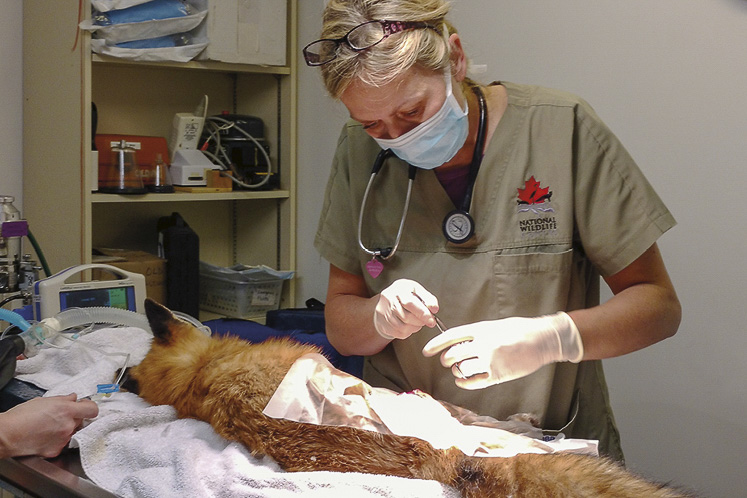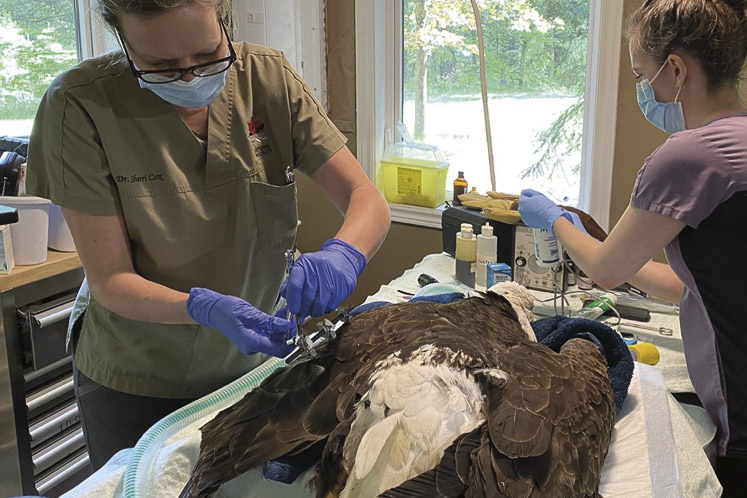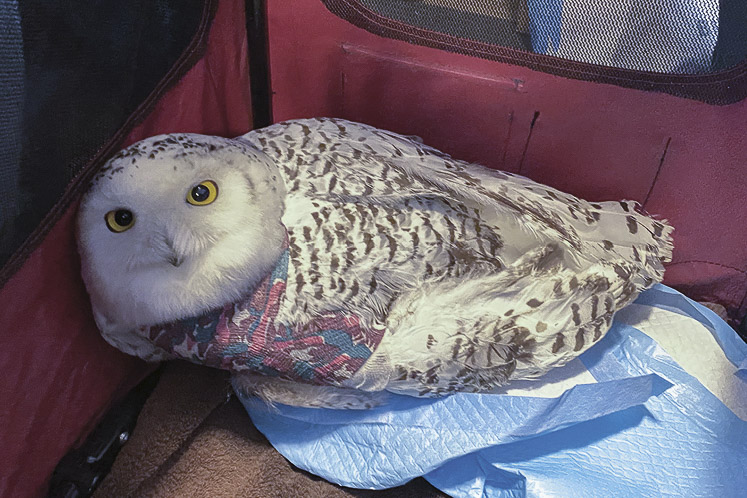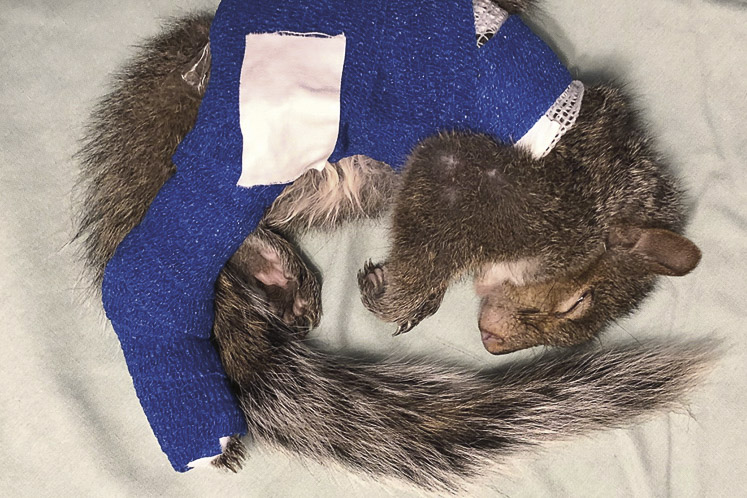Healing Powers
“How could I not help those animals that don’t have a voice?”
When wild animals intersect with human activities, it’s most often the animals who pay the price. More than 12,000 wild animals collide with cars and trucks every year in Ontario alone. And those are just what the OPP know about – the actual toll is certainly several times higher. Add to that number animals that are poisoned, shot, orphaned, impaled on fences, or that fly into windows – and it’s clear the human world is a very dangerous place for wildlife. It’s against this onslaught that veterinarian Sherri Cox is determined to pit her considerable drive and skill.
With a ready smile and seemingly boundless energy, Cox is the cofounder of the National Wildlife Centre, a wildlife hospital and veterinary training centre under ambitious development in Caledon. For now, Cox’s home base is at the Glendale Veterinary Hospital on Charleston Sideroad, actually in the van that’s parked nearby. The van is a mobile hospital fully equipped for anaesthesia, X-rays and surgery, and it’s ready to be called out at a moment’s notice to come to the aid of a wild animal.
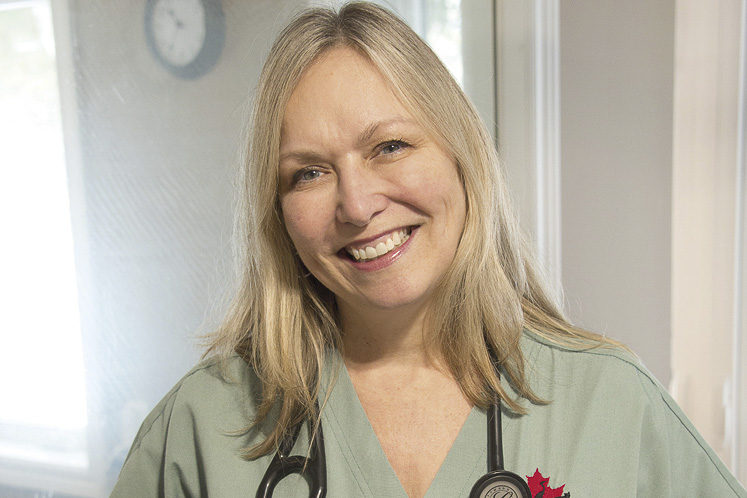
Sherri Cox, veterinarian and cofounder of the National Wildlife Centre in Caledon. Photo by Pete Paterson.
The van, however, is just the starting point. Cox has goals that cross Canada and have already extended into other provinces. The long-range plans for the centre will reach a milestone this year with the first construction phase of the project, a field hospital behind the Glendale clinic. It is the predecessor of a $6-million, 26,000-square-foot headquarters and training hub still in the works.
Twenty years ago, however, Cox’s career trajectory was very different. We sat down with her to talk about the inspiration behind her vision for the National Wildlife Centre.
IN THE HILLS: You were having considerable success in the corporate world, a vice-president of a Fortune 500 company, when you made a dramatic switch to veterinary medicine, focused on saving wildlife. When did you first realize your sympathy for injured wild animals?
SHERRI COX: I’ve always loved wildlife, nature and the environment. I was in a corporate job and enjoying it, but I really wanted to help wildlife. So in 2002, when the Prestige oil tanker spilled off the coast of Galicia, Spain, I took my vacation and volunteered to help. We were out one day doing a beach bird survey and I saw a beautiful northern gannet, a giant white bird, standing on the edge of the boat, shivering and covered in oil, and we couldn’t get to it. That bird, along with 300,000 other seabirds, died in that oil spill and I thought, “How can I possibly go back? How can I not go and help those animals that don’t have a voice?”
We are stewards of our environment. An animal that has a broken leg, or an animal that gets sick from eating lead shot, they will just suffer out there in the wild – we see so much suffering in the wild. I said, “That’s it, I’m going to dedicate the rest of my career to helping to right the wrong and try to help sick, injured or orphaned wildlife.” I went back to school and got the courses I needed to get into vet school.
ITH: Why is it important to try to save injured or orphaned wild animals?
SC: I think it’s important for a number of reasons. Look at the populations of animals that are becoming extinct or extirpated in Ontario. You know if it were your dog that was suffering, you would probably take it to a vet and get it some help. No one is there for wildlife. So I feel we need to help these animals that are suffering incredibly, sometimes at the hands of what we do. Look at the turtles. It can take 20 years for snapping turtles to reach sexual maturity, so every time we save a turtle, we’re helping the population.
ITH: You rushed off to Spain to help save animals caught in the oil spill. Now, as a veterinarian, you operate on injured bears, foxes, deer and such. Are you on call? How far afield do you travel?
SC: We work seven days a week. We’re on call 24/7 and happy to be so. I recently went to Nova Scotia to work with my intern with some deer. It’s not uncommon for us to zip up to Huntsville or Rosseau. We also have rehabilitators who bring us patients from all over the province – from Sarnia, Ottawa, from Cochrane on down.
ITH: In the midst of all this, you’re continuing to develop the National Wildlife Centre, described as a centre of excellence for conservation, wildlife clinical research, wildlife medicine, training and education. Why is it important to have a national organization?
SC: It’s important because we want to build capacity. We feel the way we can do that is to be connected to wildlife centres across Canada. By doing that, more animals can get help. We hope to train more people, open more rehab centres, and they can train others. Now, instead of having just one intern here in Ontario, I have five interns across Canada. When we do our rounds call, we talk about unique cases: “What are you working on? Okay, let’s pull up the X-ray and take a look.” Everyone is learning, and so by having more centres we’re training more veterinarians, and wherever they go, they take that knowledge and hopefully train more vets and help more animals through that sort of ripple effect.
ITH: What is the overall goal of the National Wildlife Centre?
SC: We have four pillars. The first is education and conservation, and that’s educating the public, educating students, whether that’s vet students, biology students. Education is a big piece and we do that every single day.
The second pillar is around wildlife rehabilitation. And the third pillar is discovery – that’s where we want to disseminate our findings so others can take our work and they may want to advocate based on something we’ve done.
For example, I recently published a paper on bromethalin exposure. Bromethalin is a new type of rat poison. It’s a neurotoxicant and there’s no cure. So if non-target species eat it, they could die. We had a black bear that ate bromethalin and it died. By writing this up, we’re hoping someone reads it and says, “Look, we need to do something about this.” It’s not necessarily going to be our focus here, but we hope by disseminating that knowledge, others can take it and go from there.
The fourth pillar is the least developed so far, but it’s around emergency preparedness and response for a catastrophic event that’s affecting animals – whether it’s an oil spill in the Great Lakes or a catastrophic forest fire or drought. Once we get our centre, we’ll have the facility to handle a lot of animals.
ITH: With the help of corporate donors, you are set to begin construction on the field hospital this year. That’s a big step forward in realizing your goals. Can you describe what other progress you’ve made so far?
SC: We started out with just this little van. It was just myself and my husband, Octavio Perez. Whenever we’d get a call saying, “Hey can you come take a look at this sick … fill in the blank,” we load up everything and go. Octavio and I were the cofounders. The founding board members were my family – one is a veterinarian as well. We started off as very much a tightknit family group. From that we now have an executive director and two new board members. I’ve been able to give up some of the administration to the new executive director so I can focus more on other things. Our goal is to build more capacity in Canada. I’m really pleased that we’ve gone from one little van to now being located in four provinces, Nova Scotia, Ontario, Manitoba and Alberta, and we plan to expand into all. We’ve trained at least a dozen veterinarians since we started in 2014.
ITH: What will the new building encompass? What will you be able to do there?
SC: We hope to have shovels in the ground for our field hospital very soon. This will allow us to start admitting sick and injured wildlife from the public. It’s about 2,800 square feet. It will have a small admissions or intake area where the public can come and drop off an animal. It will have surgery, X-ray, pharmacy, a lab, and some rooms for holding animals to recuperate postoperatively. At the same time, we will build some conditioning cages for postoperative care of wild animals. For birds, after surgery and after they’ve healed and grown their feathers back, for example, they can go outside and learn how to fly again. That building’s sort of the stage one. We’re also planning a much larger centre, but it all comes down to funding.
ITH: What about funding? Your website makes reference to several corporate sponsors. Where do you get your financial support?
SC: I’m a volunteer, so I don’t get paid by the National Wildlife Centre. Everything we’ve done is voluntary. We don’t receive any government funding. The National Wildlife Centre relies on donations, public donations. We apply for grants, but it’s tough.
ITH: The centre will be constructed on a 100-acre site. How were you able to acquire the land?
SC: We were able to purchase the site thanks to a generous foundation that helped us acquire the land and is holding the mortgage. Glendale Veterinary Hospital sits on the property. So they pay rent to the National Wildlife Centre, which helps us pay our bills. We have the vision, but we need the money and, in the meantime, so many animals need our help. So we’re just going ahead with building the field hospital while we continue to fundraise for the bigger build.
ITH: Do you see things changing? Are there more people interested in helping wildlife?
SC: I am an assistant professor in the College of Biological Science at the University of Guelph, and we have hundreds of students interested in wildlife rehabilitation. I had to cap it at 250 students because there’s that much interest. I have given talks at Headwaters Nature, at the Rotary clubs, schools, guest lectures in other professors’ classes. I teach at the National Wildlife Rehabilitators Association symposium every year in the United States. Wherever we can we talk about the importance of wildlife, the problems we’re causing wild animals, and what we can do to help.
ITH: What stories stand out among the animals you have treated?
SC: It can be overwhelming because it really does take a village to help wildlife. It’s not just one person or two or three. I think about last summer when we had a black bear that was hit on the highway up in the Parry Sound area. The bear wasn’t moving, but instead of shooting it, the OPP wanted to help the animal and so they called Bear with Us run by Mike and Ella McIntosh. They went out and the bear was very much alive, but it had two broken forelegs. They brought the bear down to us and we were in surgery for seven hours repairing those legs. The bear just got released in November.
We had a surgery here on a trumpeter swan with a broken humerus – that’s the big bone in its wing – and our team of veterinarians performed the surgery. But because we don’t have a centre yet, we couldn’t keep that swan for its care and rehabilitation, so it’s been transferred to Shades of Hope in Pefferlaw where it will get care until we can take the pins out of its wing. Once we take the pins out, it will continue its rehabilitation there and hopefully get released back into the wild.
Another one I remember was a common merganser. It swallowed a fish hook. Birds aren’t like mammals; they don’t have a diaphragm separating the chest cavity from the abdominal cavity. They have air sacs and all kinds of weird things. When I went in surgically, I could actually feel the heart beating on my fingers. It was a long surgery, but the bird did great and was released.
Now we do more advanced surgeries on what normally would have been a death sentence for some of these birds. We had a turkey vulture with an old fracture that healed crookedly, so the bird couldn’t fly. We’ve had red-tailed hawks too. Now we can refracture, pin and heal. That vulture was flying beautifully after a couple of months. We have a lot of those stories.
ITH: How can people help? What can people do to help you?
SC: Well, honestly, the biggest thing we need right now is financial support to build this hospital. The sooner we can get a hospital, the more animals we’ll be able to help, whether it’s, you know, “I have found a baby bird” or “I just found an animal hit by a car.” We can help, but we need the hospital. That’s our greatest need. That’s what keeps me up at night.
This interview has been edited and condensed.
How You Can Help
When you find an animal in distress
If you find a sick, injured or orphaned animal, your best first step is to contact a wildlife rehabilitator. You can call the National Wildlife Centre at 416-577-4372. “We cannot admit animals right now, but we can certainly give advice,” says NWC veterinarian Sherri Cox. “Or you could call any wildlife rehabilitator by going to the Ministry of Natural Resources and Forestry.” See ontario.ca/page/find-wildlife-rehabilitator.
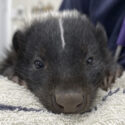 Cox also advises, “Members of the public should not care for these animals on their own. It is not legal to do so. Wildlife rehabilitators have the training and expertise to properly care for wild animals. Feeding an improper diet or housing the animal without knowing the natural history of that species could lead to detrimental outcomes. Wildlife rehabilitators work with their veterinarian to obtain appropriate medications based on the animal’s ailment.”
Cox also advises, “Members of the public should not care for these animals on their own. It is not legal to do so. Wildlife rehabilitators have the training and expertise to properly care for wild animals. Feeding an improper diet or housing the animal without knowing the natural history of that species could lead to detrimental outcomes. Wildlife rehabilitators work with their veterinarian to obtain appropriate medications based on the animal’s ailment.”
Cox also says you should avoid speaking to the animal. “We have a rule in our hospital that if the animal is awake, nobody’s talking. Or if you must talk, whisper, because you don’t want to put more stress on the animal. Humans who care for animals want to talk to them, tell them it’ll be okay, but the last thing they want to hear is a human voice.”
And take care not to kidnap. While a fawn or baby rabbit may appear to be alone, its mother is likely nearby. Check back in an hour or two, and if the animal is still there, call a rehabilitator.
Become a rehabilitator
The National Wildlife Rehabilitators Association offers a basic skills training course. Based in the United States, it is just beginning to offer the course in Canada, and Cox is authorized trainer.
“People can reach out to me directly at [email protected],” she says. “NWRA does not license you to be a rehabber; rather, they provide training. Anyone interested in working in wildlife rehabilitation should also consider volunteering with a wildlife rehabilitator to get some hands-on training and experience.
“From there, if someone is keen to start their own rehabilitation practice, they need to be authorized by the Ministry of Natural Resources and Forestry. They can contact the district office in their area to arrange a time to take the exam.”
Donate
To financially support NWC, go to nationalwildlifecentre.ca and click the “Donate Now” button.
Related Stories
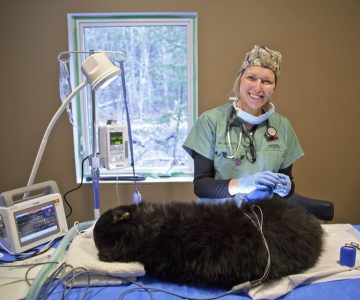
Wildlife Rescue: Cry of the Wild
Mar 26, 2018 | | EnvironmentSherri Cox, a corporate executive turned wildlife vet, takes her surgical skills on the road to aid animals in distress.
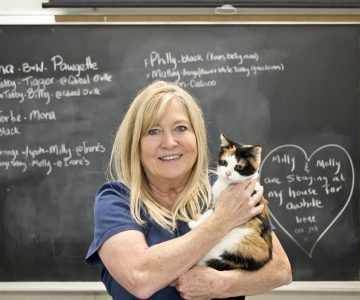
Catwoman to the Rescue: Sharon Morden
Nov 22, 2019 | | Local HeroesThe founder of Feral Cat Rescue in Melancthon gives feral felines a new lease on life.

